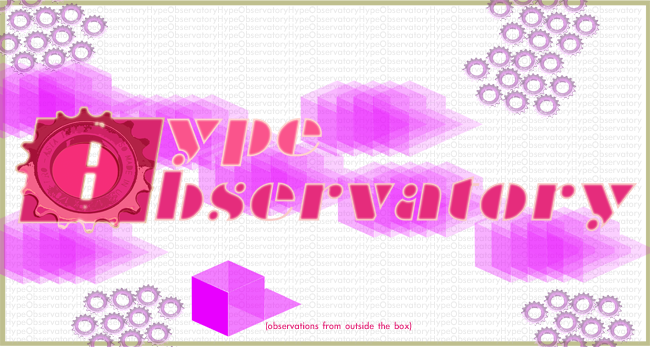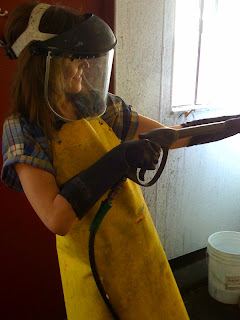Learn to silkscreen
A QUICK STEP BY STEP GUIDE TO SILK SCREEN PRINTING.
Screen Printing Supplies Needed.
(1) a screen prepared with a light-sensitive coating,(photo emulsion)
(2) a film positive (art on clear paper with black ink)
(3) a light source that will enable you to transfer the opaque images on your positive to the light-sensitive screen you have prepared.
(4)Squeegee.
(5)Masking Tape, Scotch Tape.
(6)Textile Ink, or Paper Printing Ink.
Step A–photo emulsion(light sensitive coating) for the screen.
Buy a quart of silkscreen emulsion at your local art store. Make sure it will be good for both textile ink and paper ink.
Step B Coating the screen
Coat the screen by first pouring a bead of the solution on one end of the bottom side of the screen. Spread it evenly and thinly with the squeegee or the plastic spreader. Use more solution where necessary. Work to achieve an even continuous coating on both sides of the screen fabric. Perform the final spreading on the inside of the screen. Return any excess solution to your mixing container.
Step C-Drying the coated screen
In an area AWAY FROM LIGHT AND HEAT, set the screen to dry horizontally, bottom side down. This will provide the most even, flat “film” on the underside of the screen. It will, however, require your elevating the four corners of the underside of the frame during the drying stage with push pins or other suitable devices. An empty drawer, cupboard, closet, or under a cardboard box will work fine. Allow the screen to dry thoroughly. Once the sensitized screen is dry, it must remain in a darkened area until it is ready to be exposed. A fan in the dark area will greatly speed up the drying of the emulsion on the screen.
Step D–Preparing Your Artwork.
If your using the art we gave away in Vice Magazines August Issue please cut out the ad. and bring it to a copy center. Have the copy center make you a copy of the art on clear transparent paper. That’s all you will need to make your screen. If your choosing to use different art there are many options you have here. You can simply draw with opaque black ink directly on to a clear transparent paper. If what you want to print is on white paper, take that paper to a copy center and repeat the process listed above. IMPORTANT: Please make sure your transparent paper with the art on it is in BLACK INK. Try and get it as dark as you can get it..
Step E
Before you remove the sensitized screen from the dark drying area, make sure everything you need to print with is on hand. Set up your exposure lamp as described in step F. Place your transparent paper flush to the back side of the dried silkscreen. Please be careful and do not let your silkscreen into the light yet. Tape the art to the screen with scotch tape.
Step F-Light source (VERY IMPORTANT).
To expose your artwork onto the silkscreen you will need to buy a 250 watt flood bulb. Place the light bulb in a desk lamp or something like that so that you can set the light above the silkscreen about 12 to 17 inches from the screen. Place the silkscreen on a table. Your artwork should be on the top of the flat side of the silkscreen in reverse. Use the chart below to help you expose your screen correctly. Remember that silkscreen printing takes patience.
Using a Photoflood (250 Watt bulb)
Screen Size . . Lamp Height . . Exposure Time
8″ x 10″. . . . . . 12 inches . . . . . 10 minutes
10″x14″. . . . . . 12 inches . . . . . 10 minutes
12 “x 18″ . . . . .15 inches . . . . . 16 minutes
16″x2O” . . . . . 17 inches . . . . . 20 minutes
18″x2O” . . . . . 17 inches . . . . . 20 minutes
Turn on the light and note the time. Expose according to time and distance indicated in chart. Also note: Its a little better to over expose your screen than underexpose. NOTE: a high mesh screen (195-255) requires less time under the light than a low mesh screen (110-156). After exposure, remove positive and take screen to sink.
Step G
Apply a forceful spray of water (body temperature) to both sides of the screen. DO NOT USE HOT WATER. Concentrate this spray on the light images on the top side of the screen. After a few minutes, these areas will become “open.” Continue spraying until all unwanted emulsion is gone.
Once you have completely washed the screen, let it dry thoroughly in a level flat position.
Hold the dry frame to the light and check for pin-holes. These can be covered with scotch tape. NOTE: Photo Emulsion should not be left in the screen indefinitely unless a permanent stencil is wanted.
MAKING PRINTS
Step A-Preparations
For off-contact printing tape a penny or a nickel to each of the four corners on the underside of the screen. Place a sheet of your printing paper or t shirt under the screen and position it as it is to be printed. Allow for margins. Be sure and tape off the edges of the entire screen to avoid ink going on to places that you don’t want ink on.
Step B-Selecting inks
Speedball makes a wide range of inks for both paper and textile printing. If comes in many colors and is water based. Water based inks dry in the silkscreen very fast especially if its hot where your printing. Please remember to clean your screen quickly after printing to avoid clogging and ruining the silk screen.
Step C-Printing
Spoon out the ink across the end of the screen nearest to you. With the screen lifted slightly from the base, apply an even blanket of ink onto the print area. Be sure to use an easy, smooth stroke with the squeegee at a slight angle towards you. This is the flood stroke. Drop the screen onto your paper or shirt. Lift the squeegee over the ridge of ink and make the print stroke by pulling towards yourself. Keep the squeegee at a 45 degree angle with enough pressure to scrape the ink from the screen. Lift the screen from the print, make the flood stroke, set the kick leg, remove the print and put it to dry on your rack or line. Insert new paper or shirt, release the kick leg and repeat the process.
Sharp clear prints can be produced provided you (1) maintain a generous quantity of ink on the screen, (2) use the flood stroke and (3) maintain adequate and even pressure on the squeegee during the print stroke. Print/Repeat/Print/Repeat. After your done printing, Scrape the remaining ink back into the bucket and wash the silkscreen clean with water right away.
Printing is a step by step process that takes time to get right. Experiment with your own techniques and remember mistakes in the print make for great prints. Silk Screen printing is not about perfection. Enjoy.
If you would like to learn all there is to know about the art and business of silk screen printing please buy the book “how to print t shirts for fun and profit” by Scott Fresner. That book is the one.





































































